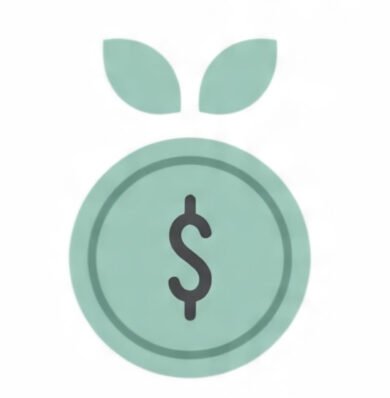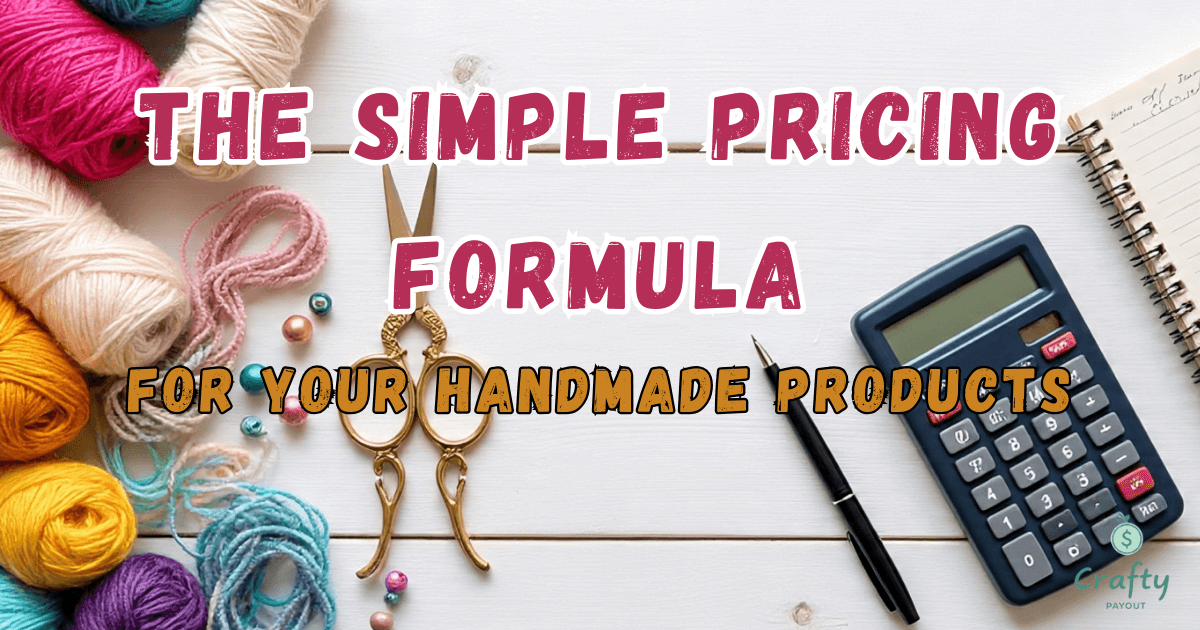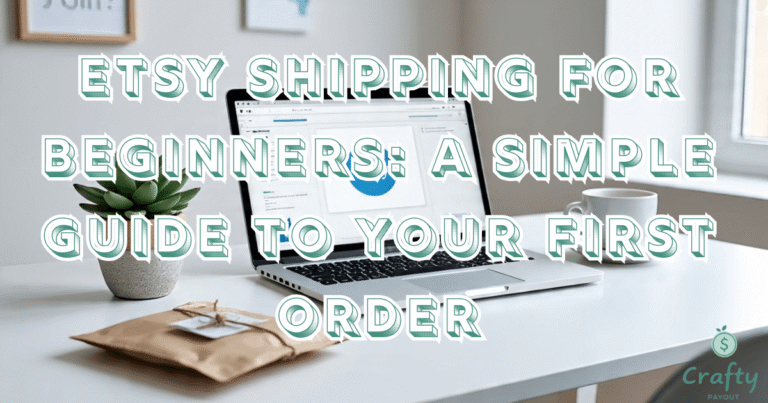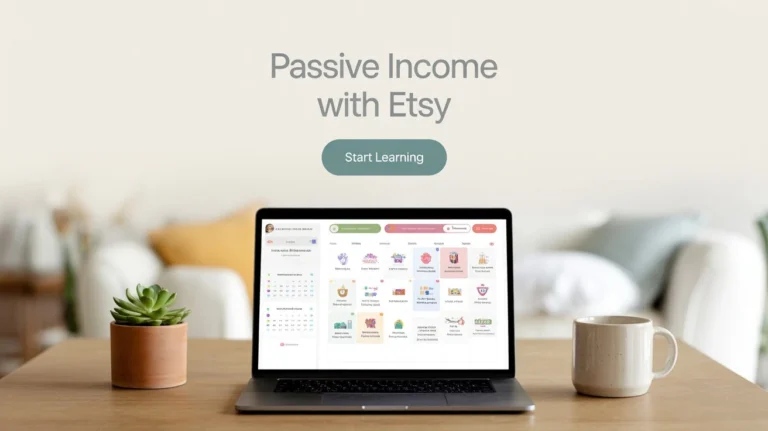How to Price Handmade Products in 3 Simple Steps
How to Price Handmade Products (A Simple Etsy Formula)
Knowing how to price handmade products is often the most terrifying question for crafters. You stare at your beautiful creations, filled with pride, but are frozen by the fear of getting it wrong. “What on earth do I charge for this?” You’re not alone. Pricing is the number one challenge that trips up talented crafters on Etsy. Price too low, and you’re basically paying customers to take your products. Price too high, and you’re left with a shop full of beautiful, unsold items.
But what if there was a simple, straightforward way to find the perfect price? There is.
This guide will give you a simple formula to calculate the perfect price for your handmade goods. No complex spreadsheets, no confusing business jargon—just a clear path to pricing with confidence and profitability.
The Biggest Mistake When Pricing Crafts
Before we get to the formula, let’s address the elephant in the room: undervaluing your time. When learning how to price handmade products, many crafters only add up the cost of their materials and call it a day. This is the fastest way to an unprofitable hobby, not a business. Your skill, your creativity, and your time are your most valuable assets. Our formula ensures you get paid for them.
The Simple Handmade Product Pricing Formula
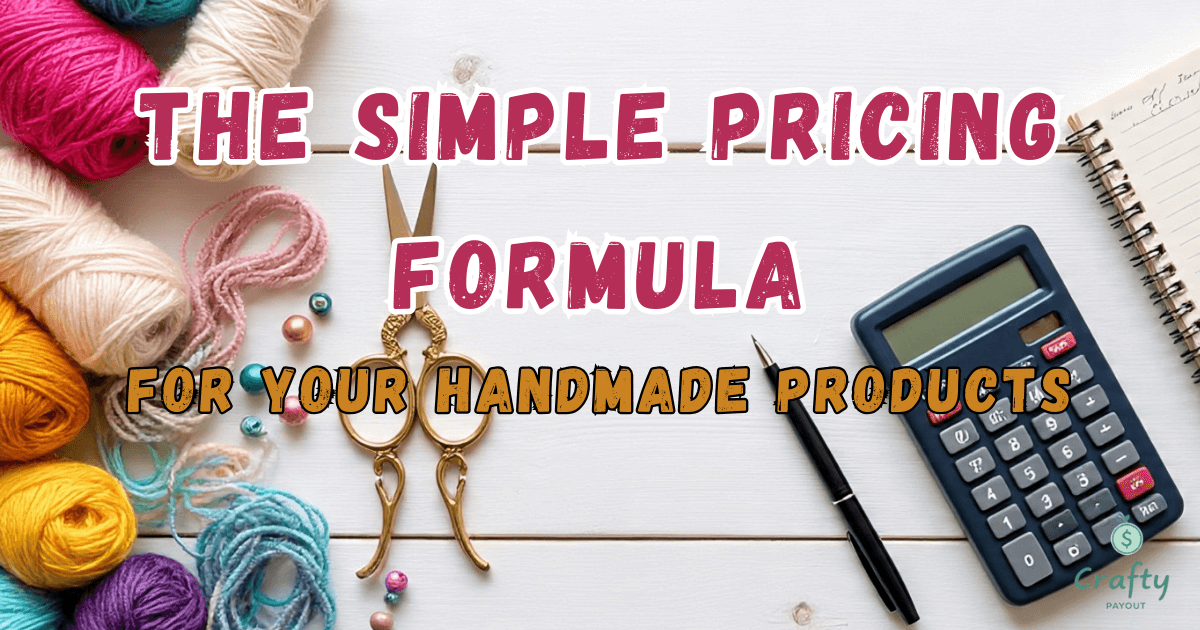
Here is the core formula. We’ll break down each part below.
(Material Costs + Labor Costs + Business Expenses) x 2 = Wholesale Price
Wholesale Price x 2 = Retail Price (Your Etsy Price)
Let’s dive into each component.
1. Material Costs
This is the easiest part. Add up the cost of every single physical component that goes into one finished product. A great tip is to use a simple spreadsheet to track these costs.
- Direct Materials: The main components (e.g., beads, yarn, wax, wood).
- Indirect Materials: The small stuff you might forget (e.g., glue, thread, paint, glitter).
- Packaging Materials: The materials to ship your item (e.g., box, bubble wrap, thank you card, twine).
Example: A Handmade Scented Candle
- Jar: $1.50
- Wax: $2.00
- Wick: $0.25
- Fragrance Oil: $1.00
- Label: $0.25
- Shipping Box & Filler: $1.00
- Total Material Costs: $6.00
2. Labor Costs
This is where you pay yourself for your skill and time. First, decide on a fair hourly wage for yourself. Be realistic. Don’t pay yourself minimum wage unless you have to. A good starting point for a skilled crafter is $15-$25 per hour.
Hourly Wage x Time to Make One Item = Labor Cost
Track how long it takes you to make one item, from start to finish. Be honest!
Example: A Handmade Scented Candle
- Your Hourly Wage: $20/hour
- Time to make one candle (prep, pour, clean up, package): 30 minutes (0.5 hours)
- Labor Cost: $20 x 0.5 = $10.00
3. Business Expenses (Overhead)
These are the costs of running your shop that aren’t tied to a single product. To calculate this, we’ll estimate a small, fixed amount per item.
This includes:
- Etsy fees (listing fees, transaction fees)
- Marketing costs (like promoted listings)
- Tools and equipment (molds, paintbrushes, software)
- A portion of your internet or electricity bill
A good rule of thumb is to add 10-15% of your material and labor costs as overhead.
Example: A Handmade Scented Candle
- Material + Labor = $6.00 + $10.00 = $16.00
- Overhead (15%): $16.00 x 0.15 = $2.40
- Total Business Expenses per item: $2.40
Putting It All Together: Calculating the Final Price
Now, let’s plug our numbers back into the main formula.
Step 1: Calculate Wholesale Price (Material Costs + Labor Costs + Business Expenses) x 2 ($6.00 + $10.00 + $2.40) x 2 = $18.40 x 2 = $36.80 (Wholesale Price)
The wholesale price is what you would charge a boutique if they wanted to buy your products in bulk to resell.
Step 2: Calculate Retail Price Wholesale Price x 2 $36.80 x 2 = $73.60 (Retail Price)
This might seem high at first glance! This is a common reaction. This price ensures your business is truly profitable, sustainable, and can handle promotions or unexpected costs. You can, of course, adjust this. The “x 2” multiplier (known as the keystone markup) is a standard, but you can adjust it to be 1.5 or 2.5 depending on your market. But never skip the first part of the formula.
Final Gut Check: Market Research
Once you have your calculated price, do a quick search on Etsy for similar items. This market check is a crucial final step when figuring out how to price handmade products.
- Are you in the same ballpark?
- If your price is much higher, is your quality, branding, or uniqueness justifying that higher price?
- If your price is much lower, you are likely undervaluing your work!
Pricing is both a science and an art. This formula gives you the science—a solid, data-backed number. You provide the art—adjusting it to fit your brand, your market, and your goals. Stop guessing and start pricing with the confidence of a true business owner. For more great resources, check out the official Etsy Seller Handbook.5 per hour.
Hourly Wage x Time to Make One Item = Labor Cost
Track how long it takes you to make one item, from start to finish. Be honest!
Example: A Handmade Scented Candle
Your Hourly Wage: $20/hour
Time to make one candle (prep, pour, clean up, package): 30 minutes (0.5 hours)
Labor Cost: $20 x 0.5 = $10.00
DISCLOSURE
This post may contain affiliate links, which means I may receive a small commission, at no cost to you, if you make a purchase through a link. Please see my full disclosure for more information.
